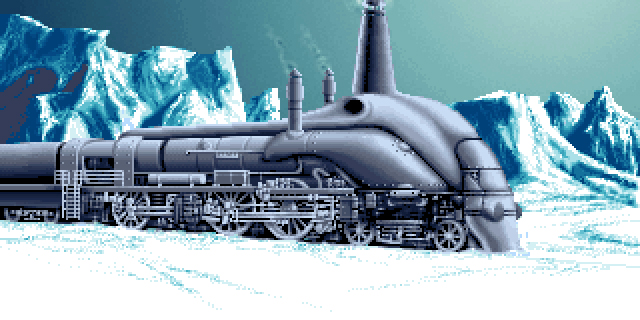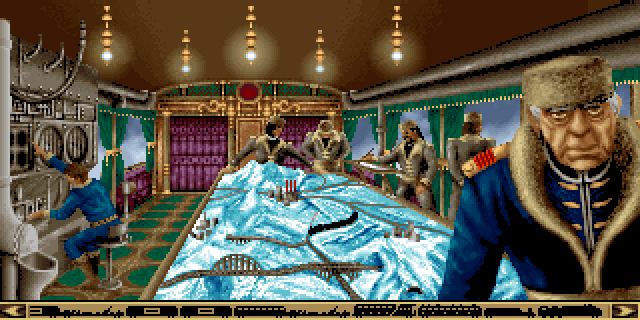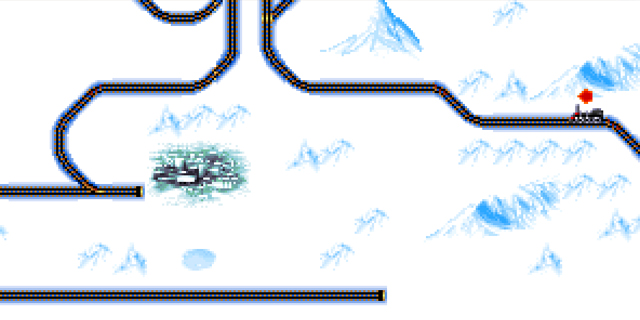
Board games have made me a very demanding person when it comes to game mechanics. After finding so many great titles focused on a powerful idea, an interesting problem or summarized in two pages of rules, the idea of spending time with wrinkles and subsystems has grown increasingly unappealing to me. However, it’s not a sustainable position. Games are enjoyed as a whole, and sometimes the wrinkles do much more than they seem at first glance.
Based on Georges-Jean Arnaud’s La Compagnie des glaces (The Ice Company), an amazing science fiction epic spanning more than 62 novels, Transarctica (or Arctic Baron) takes us to a future of permanent clouds and hail. It’s set on a post-apocalyptic Earth, where humanity has forgotten the sun and omnipotent railroad companies control the only means of communication between remaining domed cities.

After seizing control of the locomotive that is the game’s namesake, the player is cast as leader of a small group of resistance fighters, roaming the frozen wastelands in search of the remains of pre-glacial history all over the world. This is not a game only about glorious adventures. Blood to your engines and currency in such a cold world, coal is the most important resource; the necessary means to extract or trade for it for is the backbone of the game.
Captaining such a steel behemoth requires more than a sharp mind and keeping a safe boiler pressure. You must stock weapons and spare rails, lay a careful spy network to avoid enemy trains and take note of even the smallest of details. It’s here where the game must be understood as a whole. Taken in pieces, the game is uncomfortably disappointing: combat is slow and costly, and the carriages necessary to trade oil or plants aren’t worth their weight. The missile launcher, a special part of the train, requires tracing lines and calculating coordinates. Some of the scripted events aren’t especially exciting. It’s easy to miss their significance, but they compound.

The game uses those nuances to form something better, attempting to be the next step beyond Sid Meier’s Pirates! and other games of its ilk. It refuses to be a minigame collection. It wants to be more. When it covers supplies and attacks while crossing tunnels, it doesn’t try to impress you or be strategically interesting; it’s reflecting the reality of its world. Few other games would dare to give you a “game over” when you blow up your boiler or because you run over a mine. Silmarils, the game’s developer, wasn’t exactly known for pulling any punches, but it doesn’t punish you here: the cohesiveness of the game does.
Beyond that, the game manages to be intriguing. The manual doesn’t mention any win conditions or goals, beyond describing the constant layer of clouds that covers the planet and how it was created. You can’t find a guide, as far as I know; they never made any and the only user who dared to list the cities on the Internet has never completed the game. I haven’t either. It’s a mystery to me. Perhaps you can help me solve it. We know about the smallest of glitches in other titles, but not even the solution to this one. It’s one of the remaining secrets of gaming, and more than worthy of the admission price.



















